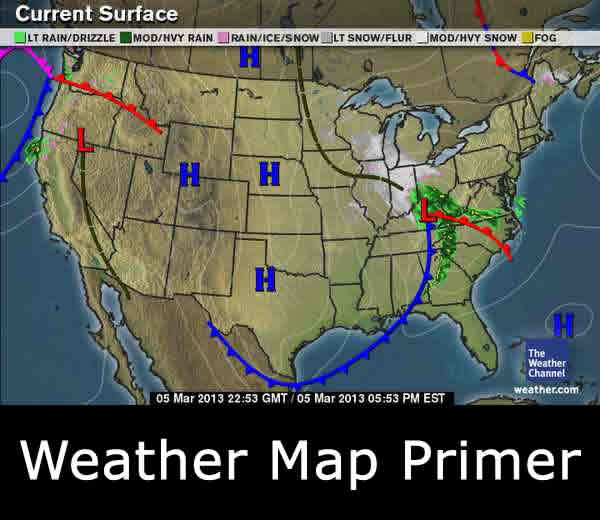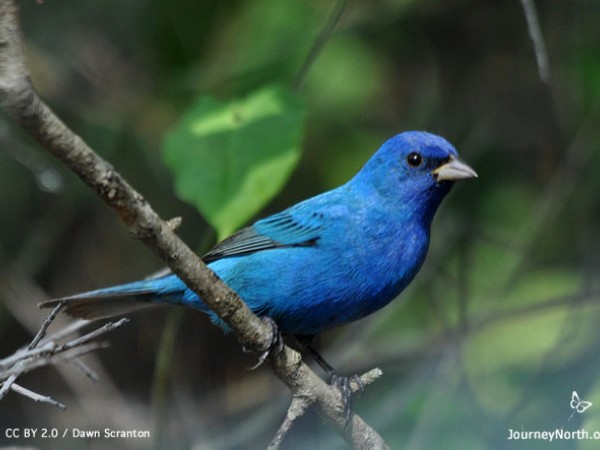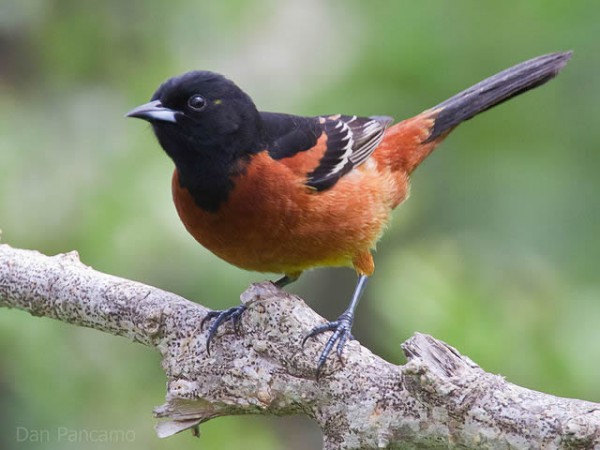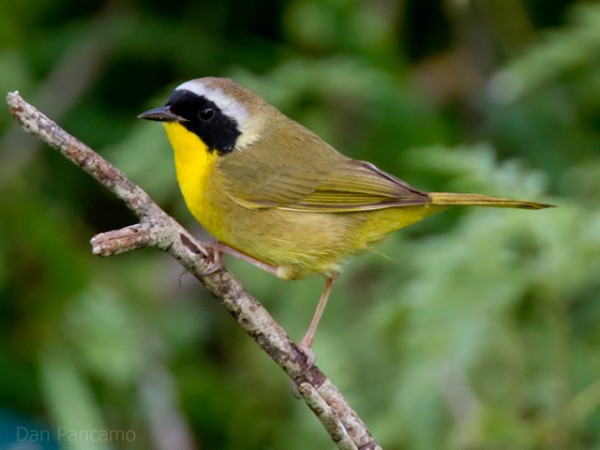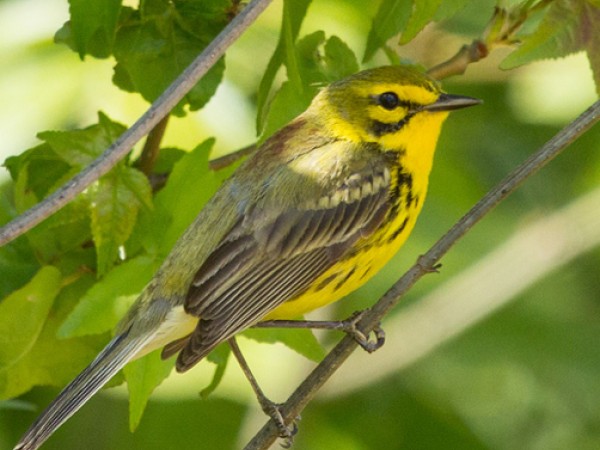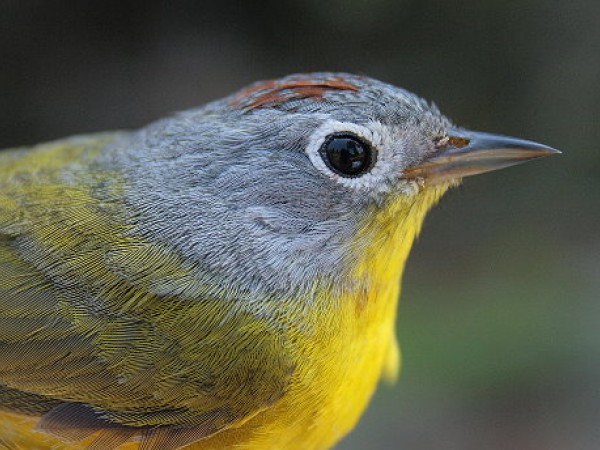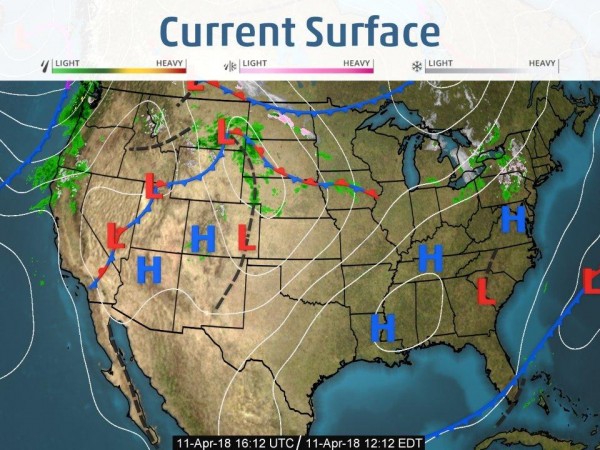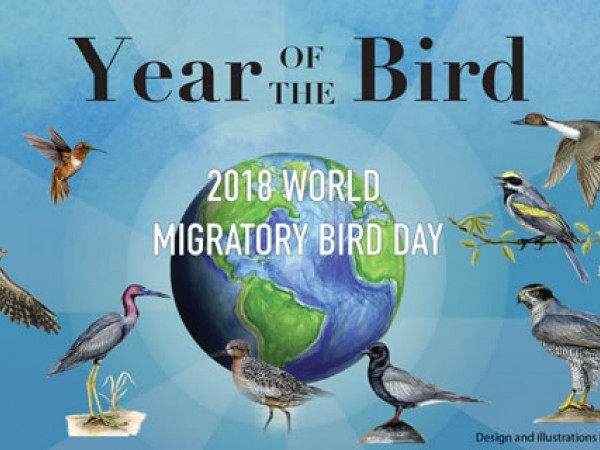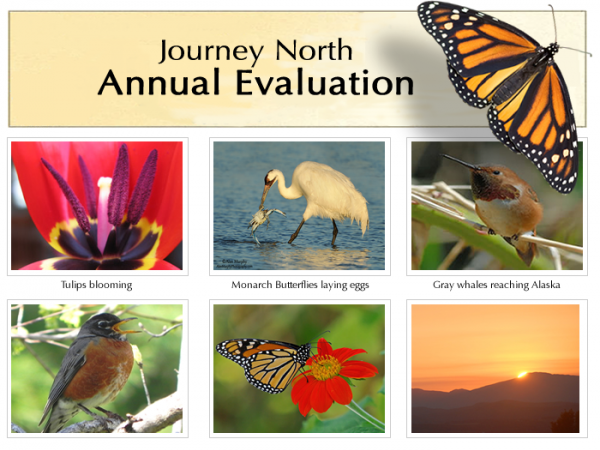Songbird Migration in Full Swing!
Countless Orioles, Indigo Buntings, and Warblers arrived on the Gulf.
Weather and Songbird Migration News: April 11, 2018
Dear Journey North,
It looks like spring migration is getting into full swing! Last week I predicted that the storm system in the east could bring a fallout, and that good weather the rest of the week would allow new migrants to arrive and others to move northward. That is exactly what happened.
Arrivals Fallout, Migrants Push North
The storms forced birds to land in big numbers all across the Gulf coast, with Indigo Buntings and orioles being the most numerous. People reported numbers of Indigo Buntings, Orchard Orioles, and Baltimore Orioles in the hundreds! Birders in Louisiana also saw 13 different warbler species, while those in Alabama recorded 22 warbler species!
Once the skies cleared and the winds shifted to the south over the weekend, migrants started making their way north again, with Louisiana Waterthrushes making it as far north as Ohio and New York, and Ruby-throated Hummingbirds and Common Yellowthroats making it into Oklahoma. Here in Tennessee, I recorded my first Prairie Warblers, Summer Tanagers, Yellow-throated Vireos, and Red-eyed Vireos.
Great Sightings Out West
Good weather also brought a lot of migration out west, too. Hammond’s Flycatchers, Nashville Warblers, and Bullock’s Orioles were very numerous throughout California and Oregon, and the first Tree Swallows were seen in Idaho. There was even an unconfirmed report of a Rufous Hummingbird in Alaska!
Clear Skies, South Winds, Another Fallout?
What do we expect to see in the next week? It looks like birders in the east will enjoy seeing more birds for a few more days, as the weather map is showing clear skies and southerly winds! Out in the Great Plains, however, there is another storm system moving across the country, and that could bring storms to the east and Gulf by the weekend and could result in another fallout. Except for coastal areas, the western U.S. is also experiencing good migration weather, so birders should get out there before another coastal system moves inland!
Year of the Bird: Navigation
How do birds know how to get where they are going during migration? They use a variety of methods to navigate or find their way.
- Many songbirds migrate at night, so the stars are a good cue, since some star patterns are always in the northern part of the sky.
- Many birds also use the Earth’s natural magnetic field, which is how a compass works. There is evidence that birds may actually be able to see the field with their eyes.
- Some birds also have a mineral called magnetite in their beaks and brains, which may act like a natural compass.
- Birds that migrate during the day use the Sun, as well as landmarks, such as rivers, mountain ranges, and coastlines.
- There is even evidence that some birds, like pigeons and some seabirds, may be able to find their way using smell! Whatever they use, birds can migrate thousands of miles and wind up back at their same territory!
David Aborn, Ornithologist
North Chickamauga Creek Conservancy
Chattanooga, TN



